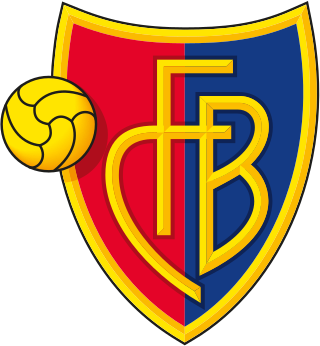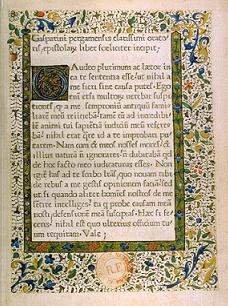Related Research Articles

Matthäus Merian der Ältere was a Swiss-born engraver who worked in Frankfurt for most of his career, where he also ran a publishing house. He was a member of the patrician Basel Merian family.

Sebastian Brant was a German humanist and satirist. He is best known for his satire Das Narrenschiff.

Fussball Club Basel 1893, widely known as FC Basel, FCB, or just Basel, is a Swiss football club based in Basel, in the Canton of Basel-Stadt. Formed in 1893, the club has been Swiss national champions 20 times, Swiss Cup winners 13 times, and Swiss League Cup winners once.

The University of Basel is a university in Basel, Switzerland. Founded on 4 April 1460, it is Switzerland's oldest university and among the world's oldest surviving universities. The university is traditionally counted among the leading institutions of higher learning in the country.

Herzog & de Meuron Basel Ltd., is a Swiss based architecture firm with its head office in Basel, Switzerland, founded by Jacques Herzog and Pierre de Meuron. Both attending the Swiss Federal Institute of Technology (ETH) in Zurich. They are perhaps best known for their conversion of the giant Bankside Power Station in London to the new home of Tate Modern. Herzog and de Meuron have been professors at ETH Zürich from 1999 until 2018, co-founding ETH Studio Basel in 1999 with architects Roger Diener and Marcel Meili in the department of architecture. Both have been visiting professors at the Harvard University Graduate School of Design, with Jacques Herzog also a visiting tutor at Cornell University College of Architecture, Art and Planning.

Johannes Oporinus was a humanist printer in Basel.

Samuel Werenfels was a Swiss theologian. He was a major figure in the move towards a "reasonable orthodoxy" in Swiss Reformed theology.

Johann Amerbach was a celebrated printer in Basel in the 15th century. He was the first printer in Basel to use the Roman type instead of Gothic and Italian and spared no expense in his art.

Johann Froben, in Latin: Johannes Frobenius, was a famous printer, publisher and learned Renaissance humanist in Basel. He was a close friend of Erasmus and cooperated closely with Hans Holbein the Younger. He made Basel one of the world's leading centres of the book trade. He passed his printing business on to his son, Hieronymus, and grandson, Ambrosius Frobenius.

Pierre Poiret Naudé was a prominent French mystic and Christian philosopher. He was born in Metz and died in Rijnsburg.

Johann Heynlin, variously spelled Heynlein, Henelyn, Henlin, Hélin, Hemlin, Hegelin, Steinlin; and translated as Jean à Lapide, Jean La Pierre , Johannes Lapideus, Johannes Lapidanus, Johannes de Lapide was a German-born scholar, humanist and theologian, who introduced the first printing press in France (Paris) in 1470.

D. Willem van der Haegen, or Willem De Kersemakere, known in Portuguese as Guilherme da Silveira, or Guilherme Casmaca, was a Flemish-born Azorean entrepreneur, explorer, and colonizer. He was a pioneer colonizer in Azorean history and his descendants formed part of the original Azorean nobility.

Peeter van der Phaliesen, Latinised as Petrus Phalesius, French versions of name Pierre Phalèse and Pierre de Phaleys was a Flemish bookseller, printer and publisher. Aside from a number of literary and scientific works, his printing press is mainly known for its publications of music. Phalesius was the principal publisher of music active in the sixteenth-century Low Countries.
Rémy Zaugg was a Swiss painter, primarily known as a conceptual artist. He played an important role as both a critic and observer of contemporary culture, especially with regards to the perception of space and architecture.

Philipp Ludwig I, Count of Hanau-Münzenberg succeeded his father in the government of the County of Hanau-Münzenberg in 1561.
The following is a timeline of the history of the city of Basel.

Countess Adriana of Nassau-Siegen, German: Adriana Gräfin von Nassau-Siegen, official titles: Gräfin zu Nassau, Vianden und Diez, Frau zu Breda, was a countess from the House of Nassau-Siegen, a cadet branch of the Ottonian Line of the House of Nassau, and through marriage Countess of Hanau-Münzenberg.

Michael Furter was a printer of incunabula in Basel.

Andreas Cratander was a Swiss printer, publisher, and book seller. Based in Basel, his workshop is estimated to have published at least 150 individual works between 1518 and 1535, predominantly Latin and Greek classics in their original languages.
Ruppel is a German language surname. It stems from a reduced form of the male given name Ruprecht – and may refer to:
References
- 1 2 3 "Berthold Ruppel". University Library of Basel. Retrieved 2023-01-27.
- ↑ "Ruppel, Berthold" (in French). Historisches Lexicon der Schweiz. Retrieved 16 August 2017.
- ↑ L. Van der Haegen, Pierre (2001). Der Frühe Basler Buchdruck. Basel: Schriften der Universitätsbibliothek Basel. p. 178. ISBN 3-7965-1090-6.
- ↑ L. Van der Haegen, Pierre (2001).p.180